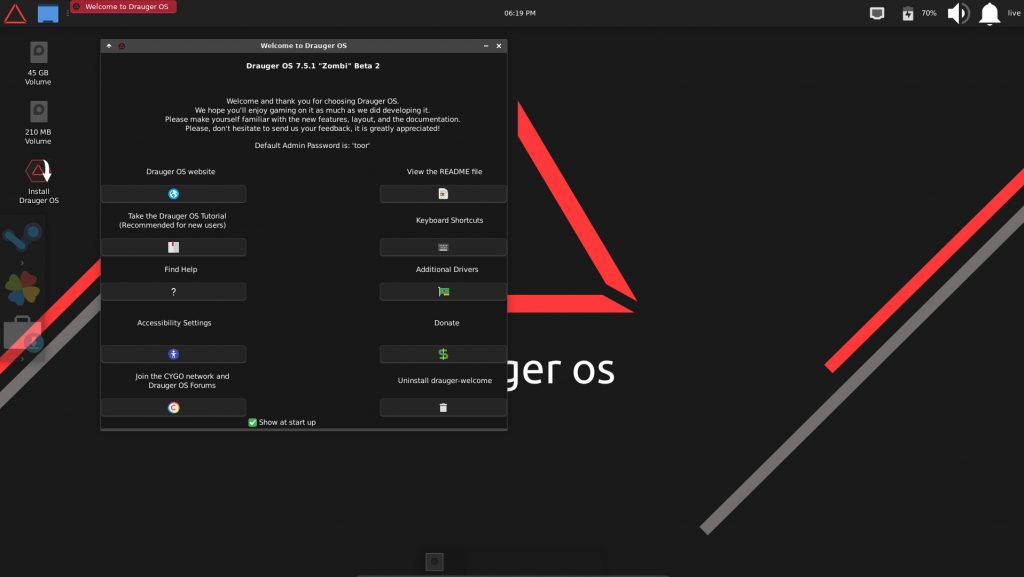


The clear categories and helpful descriptions mean that the distro can be easily navigated and used by inexperienced users to fix all kinds of issues. As you drill down the individual entries display brief but useful information to help identify their function. UBCD’s menu might be text-based but it is very well laid out and logically arranged. The customized text-based menus help guide users to the relevant utility for the issue plaguing their computer. Ultimate Boot CD (UBCD) is different from the other distros in that it ships with no graphical desktop and instead boots to a very well laid-out menu.
#Best lightweight linux distro reddit how to
There are also instructions for experienced campaigners, such as the guide on how to make a custom version and backing up data from an unbootable Windows computer. The project hosts a quick-start guide as well as detailed instructions on basic and advanced use. However the graphical desktop will help inexperienced users access the project’s extensive documentation. Note however that the graphical desktop is purely optional as all of the tools in the distro are command-line ones. The distro contains an extensive collection of tools for system and network analyzes, for hard disk partitioning, for file system handling, for data recovery, for reading out hardware information and for secure deletion. The default boot option boots into a console which lists a command to configure the keyboard and another to start the graphical environment. The latest version of SystemRescue now runs the 5.4.71 LTS (long-term support) Linux kernel, It also includes the dislocker utility to allow users to access data on media encrypted with BitLocker. This has been done away with in the newer release. Earlier versions of the distro featured an elaborate boot menu that spanned across several virtual consoles. The distro is now based on Arch Linux and uses an Xfce desktop. SystemRescue has gone through major changes in the last few releases. One of the oldest distros that’s designed to equip system admins with a variety of tools and utilities to help repair and rescue data from Linux or Windows. Rescatux hosts lots of guides and instructional videos on its websites, and there’s also some documentation to help inexperienced users get started with the distro. After you’ve scrolled through the illustrated documentation and know what to expect, you click the button labelled ‘Run!’ to launch the utility.Īdvanced users can bypass Rescapp and fire up a terminal and access the rescue tool directly. When you click a button, it brings up the relevant documentation which explains in detail what steps Rescatux will take and what information it expects from the user. The buttons inside each category have descriptive labels that help identify their function. The application’s interface has improved through the releases, and in its latest version hosts several buttons divided into various categories, such as Boot, Grub, Filesystem and Password. Upon booting, the distro takes you to the minimal LXDE-powered graphical desktop and automatically fires up its custom helper application called Rescapp. Unlike many of the other distros in this list, Rescatux can boot on both 64-bit and older 32-bit computers.

The distro also ships with tools to rescue data and restore files and can wipe both Windows and Linux installs. You can very easily use Rescatux for common repair tasks such as restoring bootloaders, repairing filesystems, fixing partition tables and resetting passwords on both Linux and Windows installs. Rescatux ships with a minimal graphical desktop and bundles all the important and useful tools to fix several issues with non-booting Linux and Windows installations.
#Best lightweight linux distro reddit update
New users shouldn’t expect much help from the project’s website as well as the documentation there is pretty old, though the developer has promised to update it as well. However, its usability is limited thanks to it being a command-line only distro. This makes it suitable even on machines that can’t boot from USB sticks.įinnix’s tool list is comprehensive, and virtually unrivalled. To that end the layout of the distro is optimized for CD-ROMs, which doesn’t impede when it’s used from a USB, but will result in faster boots from CDs. One of the goals of the distro is to keep the size of the final release small enough to fit inside a CD. There are several other noteworthy features as well including the use of zram swap compression, and improved remote SSH access. For instance, it now uses GRUB as default bootloader for both BIOS and UEFI systems. The distro has had a complete overhaul and now has a new build system based around Debian Testing.įinnix is also a native 64-bit distro now and features several enhancements that make it more usable on modern machines. In fact, the project recently celebrated its 20 year anniversary with a new release.


 0 kommentar(er)
0 kommentar(er)
